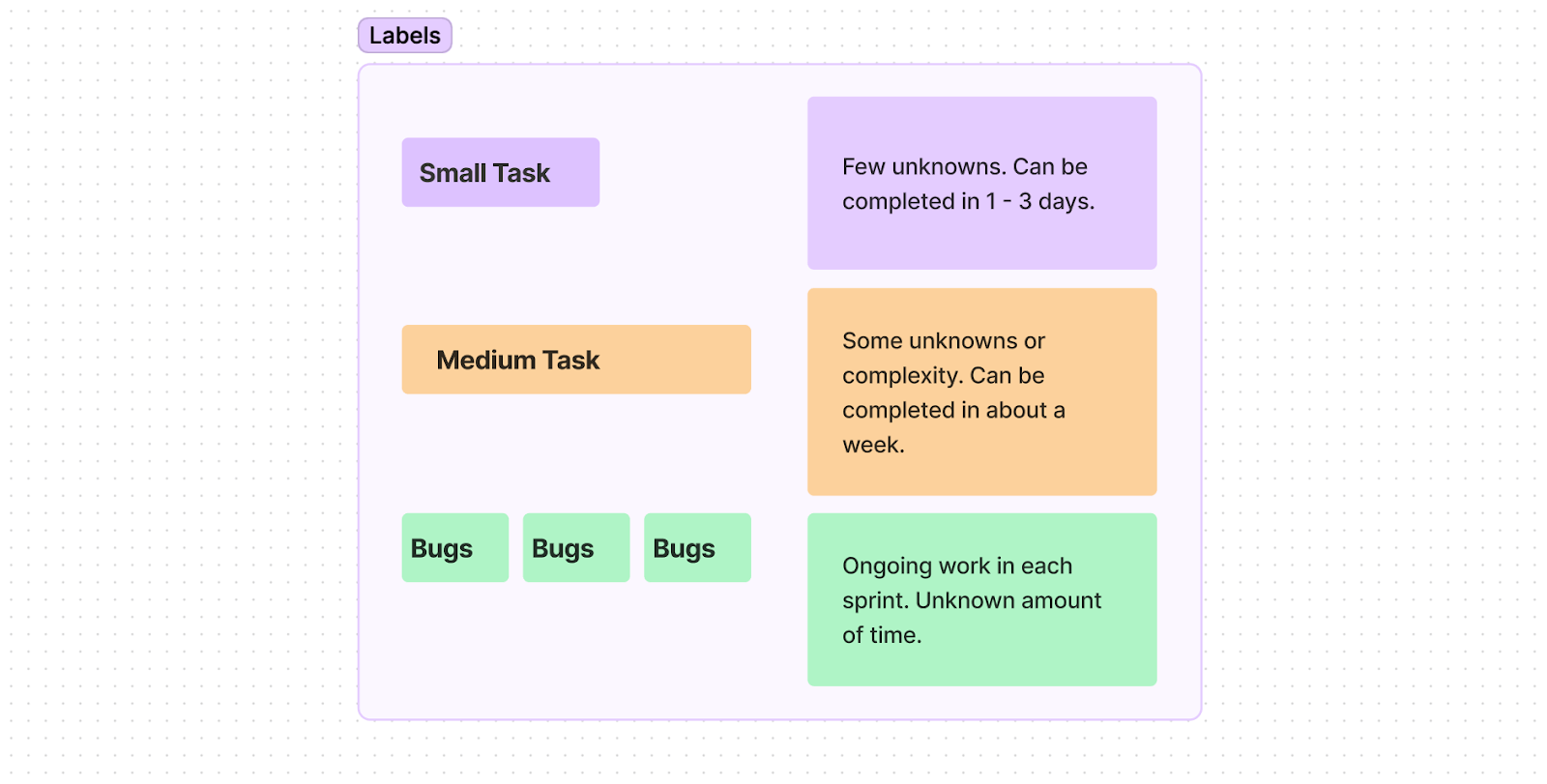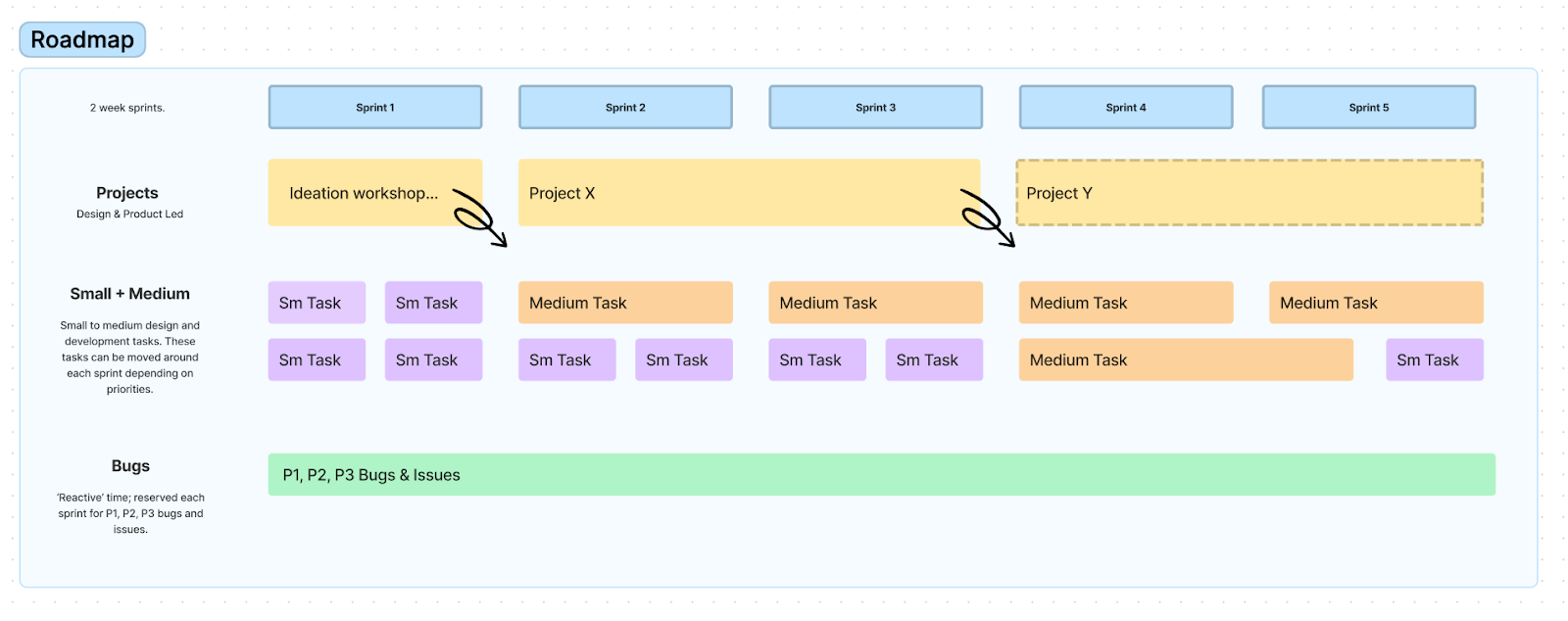In product management, a roadmap is the source of truth, the shared prioritisation tool of a product team. This artefact guides a team’s workflow so product managers, developers, and designers can best reach product OKRs.
Prior to a product going live, product managers determine the rhythm of backlog tasks and features to ensure all work is complete to meet the launch deadline. But once a product goes live and user assumptions are tested, previously planned work can be thrown on its head.
Here are 3 tips that will help you build a roadmap that's set up to conquer the unknown.
1. Prepare your post-release workflow
After launch, a product team faces the added unknowns of bugs and user feedback. These unknowns can vary the work of each sprint. You can plan with this in mind by mapping out potential workflows and defining priorities:
- Break backlog features down into tangible sprint goals that can be completed every two weeks. Working in two-week sprints, guided by the roadmap, ensures your team is incrementally working towards a shared goal.
- Sort your tasks into different types with different implications. For example, a P1 bug will take precedence over a small enhancement. Or consider when two small tasks can fit into a sprint for more impact over one medium-sized one. Label your backlog tasks based on effort so you can move them around and prioritise their importance post-launch.
If this prioritisation is agreed upon by the product team and stakeholders, you can more quickly make decisions post-launch to help influence the success of your release.
2. Layout your work in a visual roadmap
Now that you’ve broken down your backlog tasks into a manageable workflow, you can lay out tasks in a flexible visual tool. This will help take stakeholders along the journey if you need to make deviations from your original plan.
When we launched Caroline Hirons Skin Rocks app to over 50,000 users in the first weeks, we knew to expect feedback. And a lot of it. To ensure that we were able to appropriately re-prioritise, we created a visual labelling system to traffic control the user needs and get quick approval from stakeholders.
Use a template in FigJam to map out how much work your team can realistically complete each sprint. This Figjam has a roadmap template you can follow to plan your post-launch projects with your product team.
3. Outcomes over outputs
Finally remember that your roadmap is a tool to lead you to success, not a set of required tasks. Once your product is live, a product manager's main goal is to make sure the outcomes that define success are reached, not the output of building a list of features.
Planning work based on impact to users will help your business grow with both a successful and unsuccessful launch. Let’s say your launch is a smashing success, and your goal was to reach a conversion rate – awesome you can pivot and target another metric to improve on.
If a launch isn’t reaching your pre-set goals, you can shift your priorities to support the features that aren’t converting.
Why do you need a flexible roadmap?
Building a flexible roadmap at product launch will help your business work towards your vision with users in mind and keep you on track to meet goals. Ultimately, the more flexible your roadmap is the better equipped you will be to ensure long-term success.









